Impact of High Opaqueness at Lower Collisionality on Fueling Efficiency and Neutral Penetration
2025 Research Campaign, Thrust: High Opacity and Density Operation
Purpose of Experiment
Purpose of Experiment: a) Establish and calculate an opaciqueness range, in SVR type shots, for variations in the ionization source, using different types of fueling, such as pellet injection and gas puffing. b) For gas puffing, vary the source location of the gas puff between the low-field side and the high-field side to evaluate the fueling efficiency. c) Work with the lowest possible collisionality value on the pedestal in order to be close to the peeling boundary and to have little variation for density parameters before changes in the shape.
Experimental Approach
The experiment will consist of : Step 1: Reproduce the reference shot 201573 with high IP ~ 1.5 MA and PNBI ~11 MW (no gas reference)- Good ref. shot for optimal LLAMA coverage without losing the benefits of SVR. Adapt current ramp and NBI injection allow for current profile evolution and development of a stable, high IP ~2.0 MA, high power 2s long SVR flat top.- Contingency: Reproduce shot reference and work with the reference shot engineering parameters for Ip~1.5MA, Bt ~-2.1T, and Pnbi~12MW and proceed to perform the gas puffing and pellet scans with this ref shot sacrificing the highest value set for the gas puffing and pellet scan. Step 2: Using the new target shot developed in Step 1, inject D2 pellets at 3 Hz during flattop ~ 2.0s. Step 3: Repeat D2 pellets injection for 5, 8.5, and 10 Hz during flattop ~2.0s.Step 4: Using the new target shot developed in Stage 1, puff D2 gas at 11.1 torr.L.s-1 during flattop ~ 2.0s. Puff for 1s from LFS and 1s from HFS.Step 5: Repeat D2 gas puffing for 18.5, 31.5, and 37 torr.L.s-1 during flattop ~2.0s. Values might be adjusted to match pellet fueling in stage 2. Puff for 1s from LFS and 1s from HFS.
See more details, including project leads, at U.S. Department of Energy, Office of Scientific and Technical Information (OSTI).
